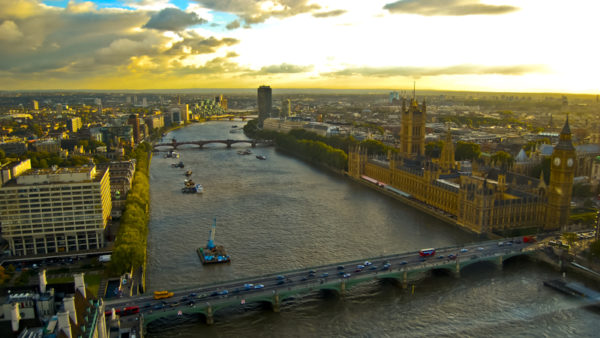13 May 2013
Sitting on the world’s fifth largest proven petroleum reserves, Iraq could be an eventual candidate for the sort of development seen in Qatar and Saudi Arabia – but when is anybody’s guess.
In a series of reports 10 years on from the invasion, David Rogers reviews the state of Iraq’s infrastructure, starting with power.
In the second week of the 2003 war, Iraq suffered a power cut. It was thought that a high voltage circuit outside Baghdad had been cut in the fighting, and that the resulting imbalance in the grid had caused a surge that tripped every power station in the country.
This was an urgent problem, invasion or not: as well as lighting and cooling, electricity was needed to pump drinking water.
Without it, water had to be drawn from the Tigris and Euphrates, which was where the sewage went.
But it’s not easy restarting a system that has suffered a total shutdown.
It takes about eight megawatts to turn a power station’s turbines – enough to supply around 12,000 homes – which was more than any portable generator could supply.
In his book on the period, Imperial Life in the Emerald City, Rajiv Chandrasekaran recounts how the boost was eventually supplied by a hydroelectic plant, but that took 10 days to organise.
During those 10 dark days, Saddam’s regime fell, and a new army formed: looters, who stripped every public facility of anything that could be carried and sold, right down to the now useless light switches.
In the aftermath, the US army’s electrical engineers began inspecting Iraq’s power system, and received a shock.
Even before the looting, the stations were on the point of collapse.
Fuel and steam oozed and spouted from ruptured pipes, records journalist T. Christian Miller in his book Blood Money.
And the generating equipment was a crazy collection of secondhand kit obtained from France, Italy, Germany, China, Russia and India, supplemented by what engineers had been able to scavenge from local scrapyards.
Before the war, the Bush administration allocated $230 million for repairs to Iraq’s electrical plant, which reveals how little was known about conditions on the ground.
In 1990-91 Gulf War, the Coalition had knocked out about 70% of Iraq’s generating capacity, and much of its distribution network, then used sanctions to prevent the import of spare parts.
The UN estimated in 2002 that Iraq’s peak demand was 6,200 megawatts and its maximum generating capacity was 4,400.
In the chaos that followed the invasion in 2003 its capacity fell to somewhere between 2,200 and 3,500.
And whereas Saddam had channeled what power there was to Baghdad, leaving the Shia south to get by with an intermittent trickle, the Coalition Provisional Authority (CPA) took the principled decision to distribute what electricity there was fairly- which meant that everyone had to endure 12-hour blackouts a day.
Unbearable
The consequences were fatal to the US project.
Without electricity the Iraqi economy could function only at a subsistence level, and everyday life became unbearable. This created a vicious circle, as the increasing disorder made it harder to carry out repairs, and the delay in carrying out repairs increased disorder.
By the end of the first summer of the occupation, Iraq’s generating capacity became the most important measure of the Coalition’s success.
Paul Bremer, the head of the CPA, announced that electricity output was to be raised to its pre-war level by 1 October, and this became the central imperative of the new government.
It was reached on 5 October, after a gargantuan effort that included airlifting generators, but quickly fell back to 3,600 as plants were taken off line for their first maintenance in 13 years.
In the years that followed, the CPA fought and failed to restore Iraq’s electricity.
In the autumn of 2003, $5.7 billion of US taxpayers’ money was allocated to Iraq’s power sector, but much of that was spent on security as the Sunni insurgency and the Sunni-Shia civil war began, and much of the rest was wasted in a welter of corruption and mismanagement.
To pick one example from Miller’s account, 26 multi-million-dollar natural gas turbines were installed, but gas was supplied to only seven of them.
16-hour blackouts
In April of this year, a report by the US Energy Information Administration (EIA) found that Iraq was still struggling to supply its demand for electricity, even with imports from Iran and Turkey, and that daily outages of up 16 hours are not uncommon.
In 2008 Iraq bought 74 turbines, able to generate total of 10,000 megawatts, but no progress in installation was made until recently because of "budgetary, contracting, and political difficulties", the EIA said.
Iraq has had to import electricity from Iran and from Turkish electricity barges – floating power plants – in the Persian Gulf.
Entrepreneurial Iraqis have set up privately-owned generators, with those in Baghdad alone providing an additional 1 GW of capacity, according to the EIA.
Iraq has said it plans to triple production to 27,000 megawatts by 2015, and the network is gradually being upgraded.
The EIA reported that over 20 new contracts have been signed for the construction of power plants.
Chinese firms will build 3.8 GW of the new capacity, followed by South Korean and Turkish companies, the EIA said.
In April, the Iraqi government bought 24 electricity substations from Siemens Turkey and Toyota, in a deal worth $81 million.
Later the same month it approved a $1 billion contract with Greek contractor Metka for the construction of a 1,642-megawatt gas power plant in the central Anbar province.
All in all, Iraq plans to spend an additional $27 billion on power over the next five years, with about half of the money to be spent on upgrading transmission and distribution systems.
But many difficulties remain.
The big one is that the political situation is undergoing a worrying deterioration, with last month described as the most violent since 2008.
Another is that most of the country’s hoped-for new capacity is to be fuelled by natural gas, but Iraq still hasn’t built the pipelines to bring it to the power stations. So it flares about a billion cubic feet of gas – some 60% of its production – every day.
The dark days look set to continue for the foreseeable future.










